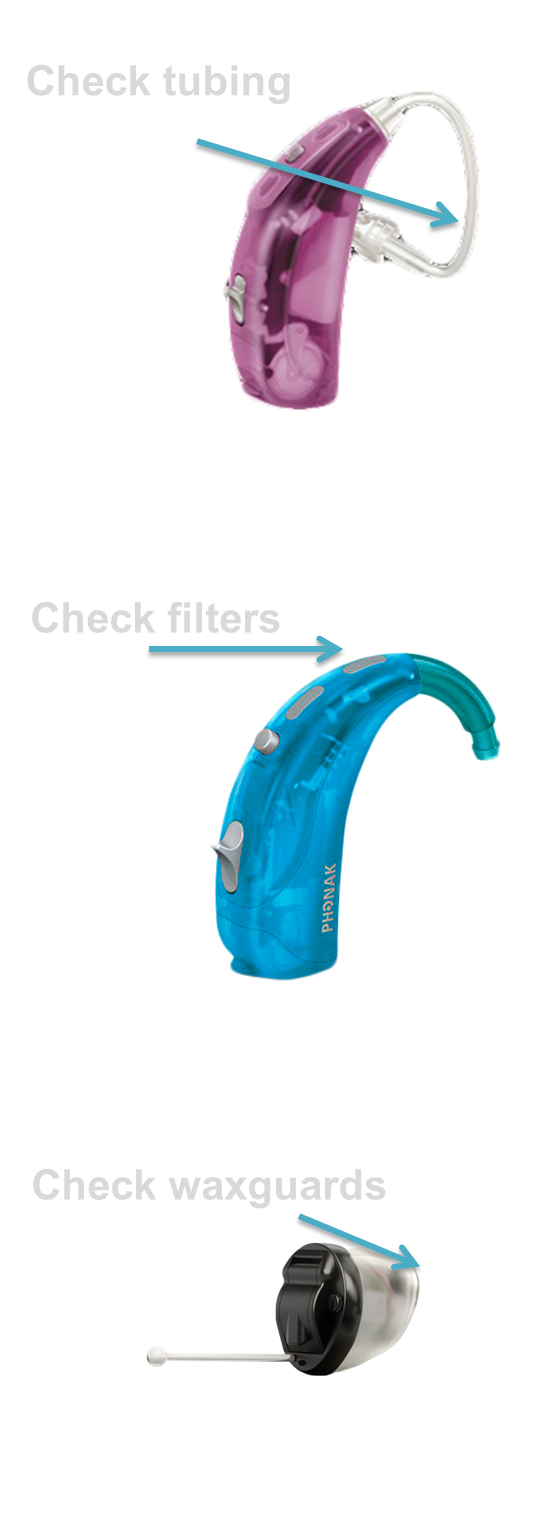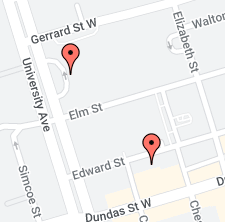My hearing aid is not working, what should I do?
– Check hearing aid battery with a battery tester and/or replace battery
– If you find moisture within the tube, use a Dri-Aid Kit. This will help dry the hearing aids and remove moisture
If this is a Behind The Ear hearing aid:
– Check the tubing to make sure it is not full of moisture and/or wax. Remove the tubing from the hearing aid gently, you can use an earmold blower to push all of the debris out of the tube. Once this is done, securely attch the tube back to the mold
– If the hearing aid has filters, check to see that they haven’t become discoloured and worn out. This will block sound travelling into the hearing aid
– Also check the hook to make sure it isn’t full of moisture
If this is a Custom hearing aid:
– Check if the waxguard is full of wax, this may need to be replaced
– If the hearing aid does not come with a waxguard, you can use a hearing aid pick to gently pick any wax out of the receiver
– Be careful to not poke too hard as the receiver is very delicate.
My hearing aid is whistling, what can I do?
– Make sure the hearing aid is fitting all the way in the ear making sure there isn’t any room for the sound to leak
– Replace the waxguard of the hearing aid and check to make sure the device is not completely full of wax
– If you are wearing a Behind the Ear hearing aid, you may need a new mold as the fit is not appropriate anymore
How often should molds be replaced?
– Depending on the age of the patient, mold should be replaced every 6-12 months
– Babies and children grow a lot faster so mold will have to be replaced more often. For children: if there are gaps around the concha bowl of the ear and mold is not fitting properly anymore, please have the molds and fit looked at by a trained professional
– The shape of the ear canal can change if you gain or lose weight (even 3-5 lbs). The mold may need replacement or recasing
When should I have my hearing aids checked?
– Generally, we suggest having your hearing aids checked and looked at every 3-4 months
– Once you notice that the sound quality has changed or it has become harder hear out of your hearing aid, they should be looked at
How do I know it’s time for a tube change?
– Generally tubing should be changed every 4-6 months
– In cold weather; tubing will start to shrink, become hard and crack
– In warmer weather; the tubing will start to fill up with moisture
– For children, the tubing may need to be replaced more often as they do pull at the hearing aids and tubing will come out. Also, the length of the tubing may need to increase depending on how fast the child has grown
Should I be having my hearing tested regularly?
– Having your hearing tested regularly should be part of your healthcare routine. If you do have a known hearing loss, it should be monitored yearly to make sure there are not any major changes.
My remote has stopped working, can I fix it?
– Some remote controls have rechargeable batteries and some have disposable batteries.
– If you find that your remote control is not working together with your hearing aids, first charge or replaces the battery. Sometimes the remote will indicate that the batteries are dead with a red flashing light or a sybol of battery which is completely drained. Others may have flashing lights that may have stopped flashing and some ust may not turn on. It is important to make sure that the battery in your remote is always charged.
-Try replacing the batteries in your hearing aids. Sometimes when the hearing aid isn’t working to it’s fullest potiential, it will compromise all of the components that work together with it.
– If your remote control is working properly but is not working together with your hearing aids, it may have lost it’s pairing. Bring the hearing aids and remote control back to your hearing healthcare professional to sync them together. This is something they may have to do through the programming software. Sometimes hearing aids and remote controls become unpaired by: changing batteries, airport security systems or other eletricmagnetic forces.
I’m going on vacation, how do I take care of my hearing aids?
– Always make sure that you have your hearing aid kit. This kit should include: a Dri-Aid Kit, extra batteries, a battery tester, cleaning tools, waxguards, filters and/or extra wires and/or receivers. Please ask your hearing healthcare professional for further information regarding your specific hearing aid.
– Also, if you are travelling by plane, forewarn security that you have hearing aids. This will help the process along quicker and hopefully remove some hassle.





